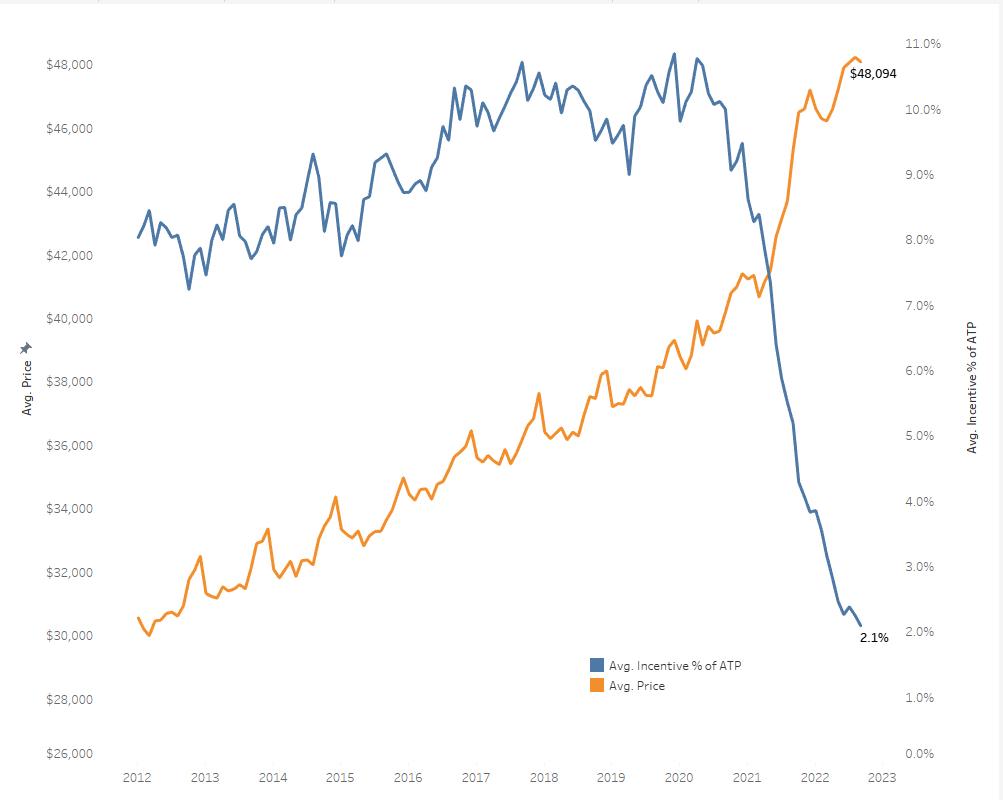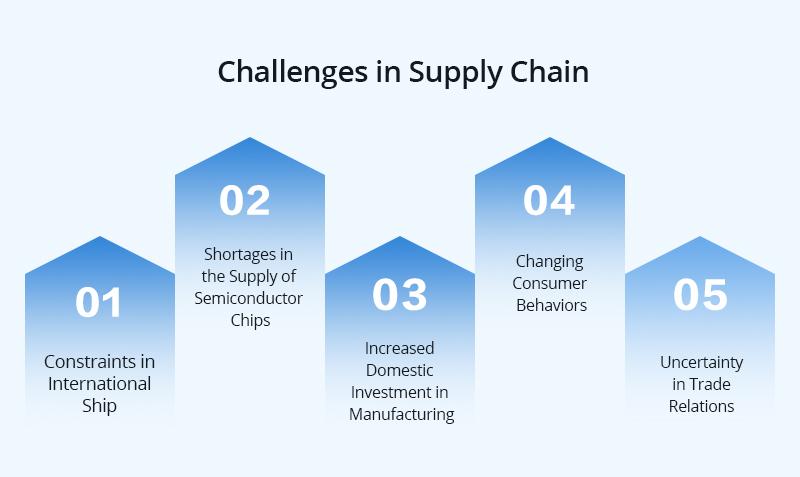In recent years, car buyers have faced a challenging market, characterized by soaring vehicle prices driven by a combination of supply chain disruptions, increased demand, and economic factors. For many, the dream of owning a new car feels more like a distant aspiration than a reality. However, as we look ahead, many are left wondering: when will new car prices finally drop? In this article, we’ll explore the current landscape of the automotive market, identify the key factors influencing car pricing, and offer insights into when consumers might expect some relief. Whether you’re in the market for a new ride or simply curious about the trends shaping the industry, we’re here to help you navigate the complexities of today’s car-buying scene with a friendly and informative approach. Let’s dive in!
Table of Contents
- Factors Driving Current New Car Prices
- Understanding Supply Chain Challenges in the Automotive Industry
- Predicting Market Trends and Their Impact on Pricing
- Smart Strategies for Car Buyers Awaiting Price Reductions
- Q&A
- To Wrap It Up

Factors Driving Current New Car Prices
The current landscape of new car prices can be attributed to several intertwined factors that have shaped the automotive market. Supply chain disruptions stemming from global events have caused significant delays in production, leading to a lower availability of vehicles. Additionally, the lingering effects of the COVID-19 pandemic have heightened demand, as consumers who postponed purchases are now eager to buy. This imbalance of supply and demand has led to inflated prices, with many consumers seeing higher sticker prices than they would have in a more stable market.
Furthermore, the increasing cost of raw materials required for manufacturing has contributed to the rising prices of new vehicles. Steel, aluminum, and semiconductor shortages have pushed manufacturers to either absorb costs or pass them on to consumers. This trend is compounded by the ongoing transition to electric vehicles, which involves substantial investment in new technologies and infrastructure. As automakers navigate these challenges, factors such as interest rates, incentives, and evolving consumer preferences will play crucial roles in determining how soon we might see a correction in car prices.

Understanding Supply Chain Challenges in the Automotive Industry
The automotive industry faces a myriad of supply chain challenges that have significantly impacted production timelines and, consequently, car prices. One major issue is the shortage of semiconductor chips, which are essential for a wide array of automotive functions ranging from engine management to infotainment systems. This shortage has led to significant delays in vehicle production, causing manufacturers to halt assembly lines and prioritize certain models over others. Additionally, disruptions caused by global events, such as the COVID-19 pandemic, have put immense pressure on logistics and shipping, contributing further to the scarcity of crucial components.
Another factor complicating the situation is the fluctuation in raw material costs. Prices for metals like steel and aluminum have surged due to increased demand and supply chain bottlenecks. In addition, geopolitical tensions can disrupt sourcing strategies for manufacturers. This volatility not only affects production costs but is also a key driver behind the high prices consumers are currently facing at dealerships. To better understand these challenges, stakeholders in the industry are increasingly focusing on building more resilient supply chains that can adapt to changing market conditions and reduce dependency on single sources for critical components.
Read More: Holiday Travel Safety Tips Offered for Families

Predicting Market Trends and Their Impact on Pricing
As we look to the future of the automotive market, several factors are converging to influence pricing trends. Economic indicators such as inflation rates, interest on loans, and consumer confidence will play a crucial role in determining when new car prices might finally see a decline. Manufacturers are also expected to adjust production levels based on consumer demand and supply chain stability, which can significantly impact inventory and pricing strategies. Key elements to monitor include:
- Supply Chain Stability: A return to normalcy in parts supply can help lower production costs.
- Interest Rates: Fluctuating interest rates can deter or encourage car purchases, directly affecting demand.
- Consumer Trends: Shifts towards electric and hybrid vehicles may alter pricing structures across the board.
Additionally, seasonal factors often influence market pricing. For instance, dealerships may offer significant discounts at the end of the year to clear out inventories for the next model year. Tracking these patterns can be beneficial for potential buyers. Below is a simplified projection of expected price change timelines based on recent trends:
| Quarter | Expected Price Change |
|---|---|
| Q1 | Stable |
| Q2 | Minor Decrease |
| Q3 | Acceleration of Discounts |
| Q4 | Projected Drop in Prices |

Smart Strategies for Car Buyers Awaiting Price Reductions
As the market waits for that elusive dip in new car prices, savvy buyers can adopt a few strategies to ensure they are well-prepared to seize the best deals when they become available. First and foremost, research is key. Staying informed about the latest market trends, manufacturer incentives, and dealership promotions can give you an edge. Subscribing to automotive newsletters and following industry blogs will keep you updated on price fluctuations and anticipated drops. Additionally, consider visiting local dealerships during off-peak hours to engage with sales staff when they may be more willing to negotiate.
Moreover, building relationships with dealerships can work in your favor. Frequent visits and casual conversations can place you on their radar when a new shipment arrives or sales begin. Keep an eye on trade-in values, which may also fluctuate, as this can greatly affect the final purchase price. Here’s a quick overview of essential tactics to stay ahead:
| Strategy | Benefit |
|---|---|
| Monitor Pricing Trends | Helps identify the right time to buy |
| Engage with Dealerships | Increases chances of receiving exclusive offers |
| Utilize Online Tools | Streamlines the research process |
| Set Alerts for Price Drops | Stay informed about immediate opportunities |
Q&A
Q&A:
Q: Why have new car prices risen so much in recent years?
A: Several factors have contributed to the rise in new car prices, including supply chain disruptions caused by the pandemic, a global semiconductor shortage, increased demand for vehicles, and inflation. These challenges have made it harder for manufacturers to keep up with consumer demand, resulting in higher prices.
Q: Are there any signs that new car prices will drop soon?
A: While predictions about price drops can be tricky, some experts believe that new car prices could stabilize or even decrease in the near future. As supply chains recover and semiconductor shortages are resolved, manufacturers may be able to increase production, leading to more inventory and potentially lower prices.
Q: How does the used car market affect new car prices?
A: The used car market significantly influences new car prices. When used car prices rise, many consumers opt for new vehicles instead, driving up demand and prices for new cars. Conversely, if used car prices fall, some buyers may choose to purchase used models, easing demand for new cars and possibly leading to price reductions.
Q: What time of year is best to buy a new car for better pricing?
A: Typically, late summer to early fall is considered a good time to buy a new car. Dealerships are often eager to clear out inventory to make room for new models, leading to potential discounts and promotions. Additionally, the end of the year is another opportunity, as dealerships may be more inclined to offer deals to meet sales targets.
Q: Should I wait to buy a new car, or is it better to purchase now?
A: Whether to wait or buy now depends on your individual circumstances. If you need a vehicle urgently, it may be better to purchase one now, as prices can be unpredictable. However, if you can wait, keeping an eye on market trends and inventory levels could benefit you in the long run, potentially allowing you to secure a better deal.
Q: What can buyers do to prepare for purchasing a new car?
A: Buyers can research current market conditions and vehicle prices, create a budget, and consider their financing options ahead of time. It’s also helpful to shop around, compare prices from different dealerships, and be flexible with vehicle options to increase your chances of finding a good deal.
Q: Are there any specific brands or models that might see price drops before others?
A: Price fluctuations can vary by brand and model based on popularity, inventory levels, and market demand. Generally, vehicles that have seen a temporary spike in demand might drop in price as supply catches up. It’s best to monitor local dealerships and online marketplaces for specific deals on certain brands or models.
Q: How can I know if I’m getting a fair price?
A: To ensure you’re getting a fair price, consider using online resources like pricing guides and comparison tools. Websites such as Kelley Blue Book or Edmunds can provide insight into the average market rate for specific makes and models. Additionally, don’t hesitate to negotiate and ask for details on pricing breakdowns to understand what you’re paying for.
Q: What do experts predict for the future of new car prices?
A: While it’s difficult to predict the exact trajectory of new car prices, many experts anticipate that as supply chain issues resolve and production ramps up, prices will begin to stabilize. However, factors like shifting consumer preferences, economic conditions, and ongoing global challenges could all play a role in shaping the market moving forward.
Remember, staying informed and patient is key when navigating the car-buying process!
To Wrap It Up
As we wrap up our exploration of the factors influencing new car prices and when we might expect a decline, it’s clear that the automotive market remains dynamic and ever-evolving. While predictions can be tricky, staying informed about industry trends, supply chain developments, and economic factors will help you make a savvy decision when the time comes to purchase a new vehicle. Whether you’re in the market now or planning for the future, patience and research will be your best allies. Keep an eye on the horizon, and you might just find the perfect opportunity to get behind the wheel of your dream car at a price that feels right. Thank you for joining us on this journey, and we hope you found the information helpful in navigating the exciting world of buying a new car! Happy driving!











